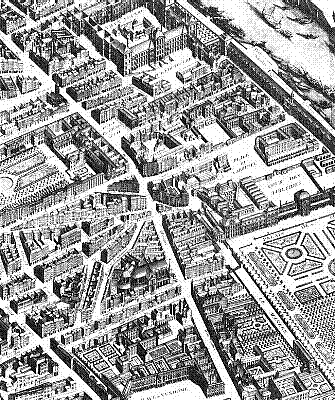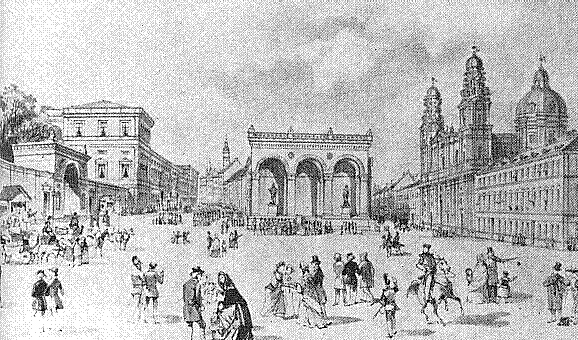1978 Collage City
| |
Colin Rowe & Fred Koetter
Collage City
1973-1978

Napoleon I entertained the project of turning Paris into a species of museum. The city was, to some degree, to become a sort of habitable exhibition, a collection of permanent reminders which were to edify both the resident and the visitor; and the substance of the instruction, one guesses right away, was to be some kind of historical panorama not only of the greatness and continuity of the French nation but, also, of the comparable (though surely slightly less) contributions of a mostly subservient Europe.
So, intrinsically one recoils from the idea; but, if it must for the present day command something less than enthusiasm (one is apt to think of Albert Speer and his unfortunate sponsor), one is still with Napoleon's idea, presented with the fantasy of a great emancipator, still provided with the embryonic programme for what, in its day, could be regarded as a genuinely radical gesture. For this is perhaps one of the first appearances of what was to be a recurrent, and maybe not a repressive, nineteenth century theme: the city as museum.

The city as museum, the city as a positive concert and educational purpose, the city as a benevolent source of random but carefully selected information, was perhaps to be most abundantly realized in the Munich of Ludwig I and Leo von Klenze, in that Biedermayer Munich with its supremely conscientious profusion of references -- Florence, medieval, Byzantine, Roman, Greek -- all of them looking like so many plates from Durand's Precis des Lecons. But, if the idea of this city, which seems to have found its time in the decade of the 1830s, is surely implicit in the cultural politics of the early nineteenth century, its significance has remained unassessed.
Colin Rowe & Fred Koetter, Collage City (Cambridge: The MIT Press, 1978) p. 126-27.
Precedent as a virtual museum of architecture:
When the authors of Collage City refer to the "city as museum," the assumption is that they mean the city as a museum of architecture. The city/museum celebrated here advocates an urban design based on the assembly of diverse architectural fragments, a compositional paradigm that relies on a preexisting set of buildings typologies and, furthermore, intentionally combines various architectural styles. Such a city would undoubtedly offer a wide range of "virtual places," metropolitan settings evocative of another place, and perhaps even another time. The citizens would inhabit and move through engrafted "virtual realities," while at the same time being exposed to interpretations and facsimiles of the world's great architecture, thus fortuitously receiving lessons in architectural history along the way.
It is also by chance that Collage City "collages" all the precedents for a virtual museum of architecture.
| |
1999.11.07
Encyclopedia Ichnographica
When I read your list of the five types of design, I immediately wondered if the notion of reenactment architectures may engender a sixth category. I know that reenactment is very much related to Mimetics and even Anthropomorphics, but I also see an important distinction between the latter two and the notion of reenactment, in that reenactments are not exactly copies, nor are they reconstructions, rather they are repeated rituals that have a core essence/event that is continual but also slightly changed over time and according to present circumstances. For example, Hadrian's Villa is perhaps the first (virtual) museum of architecture and the first reenactment 'theme park', the reign of Ludwig II of Bavaria was nothing less than a reenactment of previous European absolute monarchies, Disney's Cinderella castle/Magic Kingdom (modeled after Ludwig II's Neuschwanstein Castle) is then a reenactment of a reenactment (deluxe redux redux), Princess Diana's funeral reenacted Ancient Rome's Triumphal Way in every single detail including the massive (global) crowds that watched, and Las Vegas is undoubtedly today's world capital of reenactment architectures, even to the point of synthesizing a new reenactment urbanism. Moreover, now that I think of it, Rowe and Koetter's Collage City in part very much purports reenactment architectures/urbanisms although I believe the word reenactment is never used. Even if reenactment architectures are only a subset of Mimetics, I believe that reenactment architectures will nonetheless become a predominant design methodology throughout the coming millennium. It is then towards the notion of understanding and formulating a theory of reenactment architectures that I plan to further use what Piranesi's Ichnographia Campus Martius teaches me.
| |
2000.03.25
ideas
...reenactment architectures in Bavaria: Königsplatz, Collage City (city as museum).
|